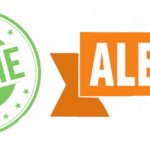How to Launch a Website: Getting the Basics in Place
If you’re looking to launch a new website for your business, I’ll warn you right up front: it requires quite a bit of work! It may not seem that way. Even the simple websites you visit — those with just a few pages — go through hours of pre-planning and pre-production before they go live. And when they do, those behind the websites don’t just sit back and wait for the traffic to roll in. There’s real work to be done to publicize the launch. But we’ll get to that part later.
We’ve put together a two-part guide to let you know exactly what you need to do to launch a new website of your own. This first part focuses on the back-end work you’ll need to do to research your content and get your website up and running. In our next part, coming soon, we’ll talk more about how you can let the world know your website is online.
Now, let’s get started.
Register a Domain Name
 It’s the endcap of almost every modern call to action and the beginning of every website story. Search (mainly Google) has tried and tried to make the domain name irrelevant, but the dot com just won’t die. Domain names are the Internet equivalent of the phone number, and just like all those law office commercials with repeating digit numbers (“In an accident? Dial the sevens!”), a memorable domain name is high on the list of what most businesses want for their website.
It’s the endcap of almost every modern call to action and the beginning of every website story. Search (mainly Google) has tried and tried to make the domain name irrelevant, but the dot com just won’t die. Domain names are the Internet equivalent of the phone number, and just like all those law office commercials with repeating digit numbers (“In an accident? Dial the sevens!”), a memorable domain name is high on the list of what most businesses want for their website.
When choosing a domain name, there are generally two schools of thought, and they’ll differ depending on what your objectives are. If your primary goal is to use your domain name as part of your branding, use your company name, or something close to it. We’re iwebcontent and we use iwebcontent.com. If you know our name, you’ll have no problem finding us online.
If you’re not as concerned with your brand and search engine rankings are more important, you can make your domain name more generic. While iwebcontent.com does have some of what we do in the name, web content, we could use something more literal like InternetMarketingCompany.com (which, unsurprisingly, is taken).
How do you find a domain name? Good question! Personally, I use a tool called Domainr. You can type in some name ideas and, in real time, Domainr will display results and show you whether or not the domain name you want is taken.
Choose a Platform
 The platform you use for your website is important. You’ll be using it to import and host all of your content, which means it should be user friendly and reliable. Base your choice of platform on the type of website you’ll be running. For most companies looking to design a website, there’s one clear and obvious option, and it powers 25% of the websites in the world: WordPress.
The platform you use for your website is important. You’ll be using it to import and host all of your content, which means it should be user friendly and reliable. Base your choice of platform on the type of website you’ll be running. For most companies looking to design a website, there’s one clear and obvious option, and it powers 25% of the websites in the world: WordPress.
WordPress started out as a platform for bloggers, but over the years, it has become so much more. You can host almost any type of content on WordPress, whether it’s a blog, business website, online shop, or portfolio page. We use WordPress for our own site, as it makes manipulating content quick and painless. And even if your business isn’t an online marketing company, you can use the wide range of plugins available to make WordPress do more than it can out of the box.
Of course, WordPress won’t be everyone’s choice. If you have advanced needs that WordPress can’t handle, there are other platforms available for you to consider. Joomla is another content management option used around the Web. Magenta is a platform for online stores and has a large community of users. There are many more you can choose from, too. Just be sure to select the one you feel meets your needs.
Select the Design
 Assuming you aren’t an artist or website developer, the next step is to select a template or a web development company. A web designer will build a custom website with all of your features and specifications in mind. In general, these companies only include the design. The content will be separate.
Assuming you aren’t an artist or website developer, the next step is to select a template or a web development company. A web designer will build a custom website with all of your features and specifications in mind. In general, these companies only include the design. The content will be separate.
It is less costly to purchase a template. It will include the design work that determines what your website will look like. These are usually customizable to accommodate your brand’s colors, typefaces and logo. Make sure the template you buy is compatible with your platform and has good reviews to alleviate technical problems down the road. Templates can be found online at sites such as template.com, themeforest.com and creativemarket.com.
Choose Images
 Images are an important part of your website, as well. Be sure to select the colors and styles that will work harmoniously with your template and brand. You can buy royalty free images from online stock photo companies such as istockphoto.com, bigstockphoto.com, shutterstock.com, stock.adobe.com and many others.
Images are an important part of your website, as well. Be sure to select the colors and styles that will work harmoniously with your template and brand. You can buy royalty free images from online stock photo companies such as istockphoto.com, bigstockphoto.com, shutterstock.com, stock.adobe.com and many others.
Research Keywords
 When you look for something online using a search engine, you type in what’s called a search keyword or keyword phrase. For example, if you use a phrase like, “Star Wars t-shirt,” Google looks through its expansive database of indexed webpages, filters out all the junk, and delivers you the most relevant results in milliseconds. It’s actually quite remarkable.
When you look for something online using a search engine, you type in what’s called a search keyword or keyword phrase. For example, if you use a phrase like, “Star Wars t-shirt,” Google looks through its expansive database of indexed webpages, filters out all the junk, and delivers you the most relevant results in milliseconds. It’s actually quite remarkable.
Now ask yourself: if someone were to search for a business like yours online, what kind of keywords would they use? You may have some guesses, but there’s no need to guess when a magical website exists to show you which keywords are being used and which aren’t.
Google’s AdWords Keyword Planner was built to show advertisers which keywords are getting traffic in Google Search. But those who aren’t advertising at all can still use the tool to test keywords for viability. Simply load up AdWords, click “Tools,” go to “Keyword Planner,” and then choose “Get search volume data and trends.” From there, type some of your keyword ideas into the box, click “Get search volume,” and you’ll get a list of your keywords and their estimated number of searches per month.
If you don’t have keyword ideas of your own, Keyword Planner has you covered there, too. When you load up Keyword Planner again, click “Search for new keywords using a phrase, website or category” and enter some information about your business. Google will generate a lovely list of keyword ideas you can base your webpages and future blog posts around, just like that.
Plot Your Navigation
 Once you have your keywords, you can go about deciding which pages you’re going to have on your website. Some mainstays consistent across every industry include:
Once you have your keywords, you can go about deciding which pages you’re going to have on your website. Some mainstays consistent across every industry include:
- The home page (of course)
- About Us
- Blog
- Contact
You may need to include some additional pages, as well, depending on the type of website you’re launching. If you collect user data, it’s recommended you include a Privacy Policy as a separate page. And if your visitors can sign up for a service from your website, it’s a good idea to include a Terms of Service (TOS) page, too.
Otherwise, base your other pages around the type of business you’re operating and the services you provide. If you own a landscaping company, you may want pages for Lawn Care, Hedge Trimming, and so on.
Write your Content
 Now comes the fun part if you like writing and pure torture for everyone else. Some find it easy to tell the story of your business, what you have to offer, and how it can benefit your customers. Others find out quick enough it’s not as easy as it looks, especially when it comes to those keywords you researched. You’ll be using them here.
Now comes the fun part if you like writing and pure torture for everyone else. Some find it easy to tell the story of your business, what you have to offer, and how it can benefit your customers. Others find out quick enough it’s not as easy as it looks, especially when it comes to those keywords you researched. You’ll be using them here.
Sprinkle a few mentions of a particular keyword phrase on the most appropriate page. Make sure you use them in your titles, image tags and every 100 words or so. It’s best practice to include at least 300 words of content on each page. Using keywords in your page URLs (the addresses your pages are located) are important, too. Optimizing the content by following these guidelines will help search engines understand what your page is about and give you a better shot at ranking your site for those keywords.
Keep it tuned here for Part Two of our How to Launch a New Website series, where we’ll tell you how to let the world know your newly published website is online.
If you’re interested in a new website, or Internet marketing in general, feel free to contact us. We’ve designed, written content for and launched attractive, professional websites in a lot of different business verticals. See our website portfolio here.






